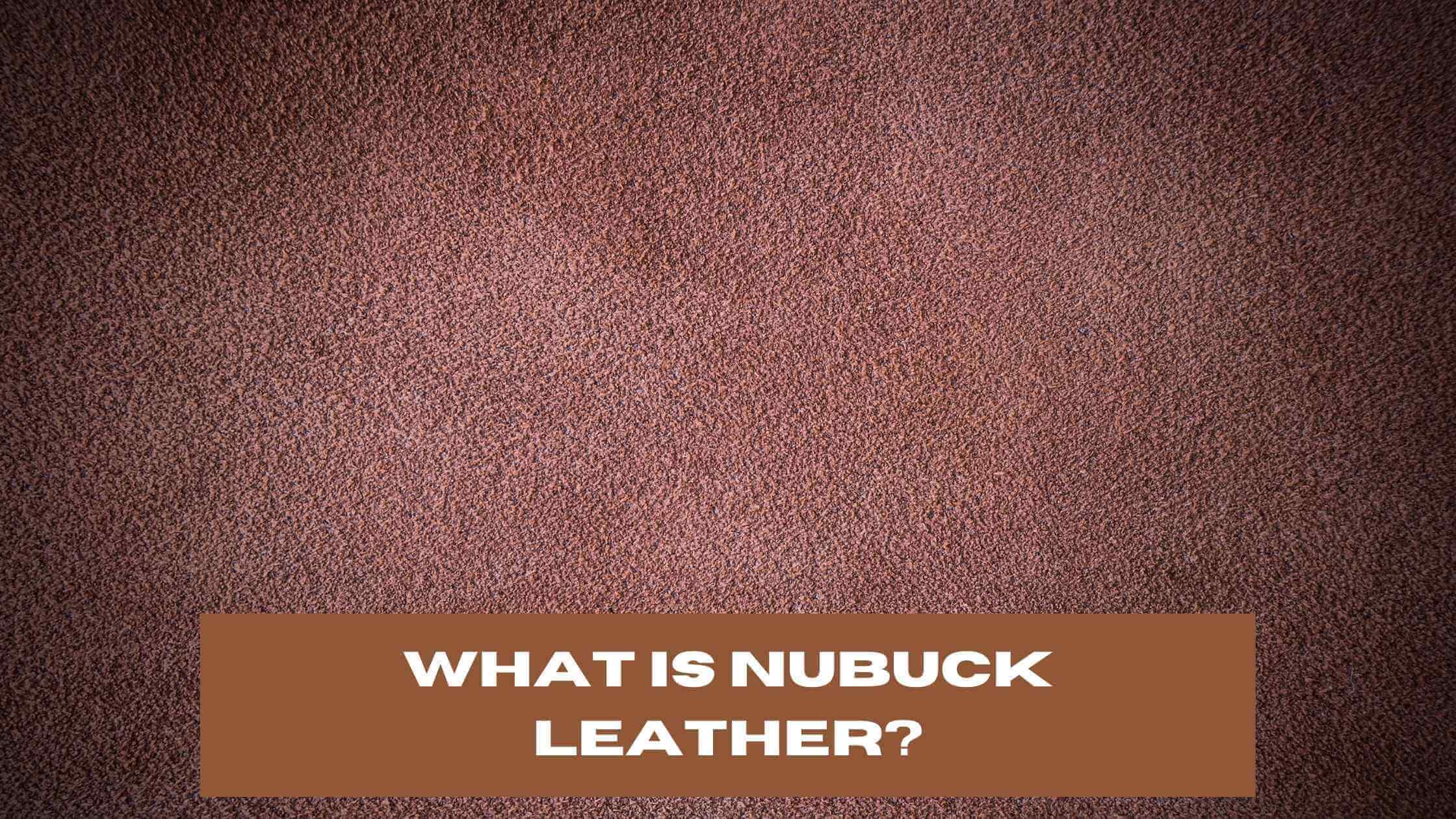Since I’ve spent countless hours working with various types of leather, today, I want to share my personal insights on nubuck leather. If you’ve ever found yourself questioning the unique attributes and care routines of Nubuck, this guide is crafted just for you.
Nubuck leather is a top-grain leather that is sanded on the outer surface to give it a soft, velvety texture, making it distinct from suede which is made from the inner layer of the hide. It is prized for its elegance and versatility in crafting items like shoes, furniture, and accessories.
An Insider’s Look: What is Nubuck Leather?
Nubuck leather is top-grain leather, primarily fashioned from calf or cowskin. When you run your fingers across it, the surface feels as soft as a cloud. Although many might mistake it for suede at first glance, the two are distinctive in their own right.
From my countless days at the workshop, nubuck leather stands out for its velvety texture. It’s a top choice for crafting elegant shoes, cozy boots, and luxurious couches. If you’re wondering about its authenticity, rest assured. Nubuck is as genuine as they come, being the top-grain part of the animal skin.
One thing that always amazes me is that while our ancestors might have used deer or elk skin for traditional leather, modern nubuck leather primarily hails from calfskin. The reason? Calfskin boasts a superior tensile strength, making it an ideal choice for this leather type.
Pro Tip: When differentiating nubuck from suede, remember: nubuck is the top layer, while suede is the inner layer. This means nubuck possesses greater strength and durability.
Differences Between Nubuck and Suede
Many times, visitors to my workshop have innocently confused Nubuck for suede. Both might seem similar to the untrained eye, yet they have defining characteristics.
Nubuck undergoes a sanding process to achieve its soft, velvety texture, reducing the natural imperfections present in the skin. On the other hand, suede, being the inner layer of the grain, is inherently weaker.
One of my cherished memories is when I crafted a pair of shoes using nubuck leather. Its soft and pliable texture made it a joy to work with. Although nubuck is sensitive, it offers an unmatched suppleness. Suede, while having its own charm, is often used as a liner, safeguarding it from potential damage.
Fun Fact: You can "write" or "draw" on nubuck leather by moving its fibers around with your finger, giving it a unique, personalized touch!
How is Nubuck Leather Made? (From Raw Skin to Elegant Leather)
Traditional leather undergoes a long tanning and stretching process. But Nubuck’s creation, in comparison, is more straightforward. The skin, once cleaned, is sanded down and buffed, then transformed into the final product. This simple process gives nubuck its raw, natural charm, differentiating it from more processed leather types.
As a craftsman, the beauty of nubuck leather never ceases to enthrall me. The matte finish, the softness, the myriad of colors it can take on – there’s so much to love! With time and care, it can even develop a patina, a trait some leather enthusiasts (like myself) absolutely adore.
The Worth of Nubuck: A Price for Elegance
Leather, in general, carries a premium price tag, and Nubuck is no exception. Although it undergoes less processing than other leather types, its brushed appearance gives it an elegant edge. Not to mention, its superior durability compared to suede further justifies its cost.
The Durability Spectrum: Where Does Nubuck Stand?
The world of leather is vast, and durability varies across types. Nubuck, in its sensitive elegance, lies somewhere in the middle of the durability spectrum. It’s stronger than suede yet a tad more delicate than finished leather.
Weighing the Pros and Cons
Like every leather type I’ve worked with, nubuck has its highs and lows. Its strengths lie in its softness, breathability, and versatility. However, its sensitivity to water and dirt necessitates special care. That said, the charm and elegance it brings to the table are unparalleled, making every bit of care worth the effort.
Pros of Nubuck Leather:
- Strength: It’s definitely more robust than suede.
- Softness: One touch, and you’ll fall in love with its soft texture.
- Breathability: Wearing it feels like a gentle breeze, especially during hot summer days.
- Versatility: Its diverse applications might surprise you.
- Low Maintenance: Say goodbye to regular polishing sessions.
Cons of Nubuck Leather:
- Sensitivity: It doesn’t play well with water and dirt.
- Cleaning: A brush is a must-have for cleaning and buffing.
- Price: It’s a tad pricier than suede but worth every penny.
Nubuck in Our Daily Lives
Nubuck has weaved its way into various aspects of our lives:
- Footwear
- Handbags
- Car seats
- Furniture
You might’ve noticed Nubuck’s dominance in the footwear world. Why, you ask? Well, while its maintenance might seem daunting, especially for items exposed to daily wear and tear, with the right care, it’s worth the effort.
Nubuck Leather Care: My Recommendations
Understanding how to care for your nubuck pieces is the key to their longevity. Over the years, I’ve tested numerous products designed for nubuck care. While Nubuck doesn’t require polishing, investing in good sprays to protect it from the elements is essential. And if you’re wondering about its waterproof capabilities, I’ve detailed it in another post.
Pro Tip: Invest in a quality nubuck brush. It's an essential tool to keep your nubuck items looking fresh and clean.
Choosing nubuck over traditional finished leather is subjective. But, with the insights above, I hope you feel more equipped to make an informed decision.
Thinking of someone pondering their next leather purchase? Feel free to share this guide with them!
Did you find this piece insightful? Your feedback propels me to dive deeper and share more of my leatherworking adventures.

